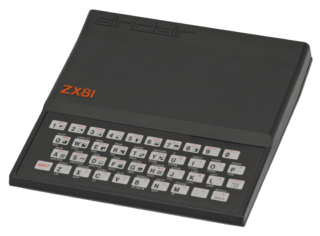An abbreviation is a shortened form of a word or phrase, by any method including shortening, contraction, initialism or crasis.

In cryptography, a cipher is an algorithm for performing encryption or decryption—a series of well-defined steps that can be followed as a procedure. An alternative, less common term is encipherment. To encipher or encode is to convert information into cipher or code. In common parlance, "cipher" is synonymous with "code", as they are both a set of steps that encrypt a message; however, the concepts are distinct in cryptography, especially classical cryptography.

Camel case is the practice of writing phrases without spaces or punctuation and with capitalized words. The format indicates the first word starting with either case, then the following words having an initial uppercase letter. Common examples include YouTube, PowerPoint, HarperCollins, FedEx, iPhone, eBay, and LaGuardia. Camel case is often used as a naming convention in computer programming. It is also sometimes used in online usernames such as JohnSmith, and to make multi-word domain names more legible, for example in promoting EasyWidgetCompany.com.

Leet, also known as eleet or leetspeak, is a system of modified spellings used primarily on the Internet. It often uses character replacements in ways that play on the similarity of their glyphs via reflection or other resemblance. Additionally, it modifies certain words on the basis of a system of suffixes and alternative meanings. There are many dialects or linguistic varieties in different online communities.

The ZX81 is a home computer that was produced by Sinclair Research and manufactured in Dundee, Scotland, by Timex Corporation. It was launched in the United Kingdom in March 1981 as the successor to Sinclair's ZX80 and designed to be a low-cost introduction to home computing for the general public. It was hugely successful; more than 1.5 million units were sold. In the United States it was initially sold as the ZX-81 under licence by Timex. Timex later produced its own versions of the ZX81: the Timex Sinclair 1000 and Timex Sinclair 1500. Unauthorized ZX81 clones were produced in several countries.

Thorn or þorn is a letter in the Old English, Old Norse, Old Swedish and modern Icelandic alphabets, as well as modern transliterations of the Gothic alphabet, Middle Scots, and some dialects of Middle English. It was also used in medieval Scandinavia, but it was later replaced with the digraph th, except in Iceland, where it survives. The letter originated from the rune ᚦ in the Elder Fuþark and was called thorn in the Anglo-Saxon and thorn or thurs in the Scandinavian rune poems. It is similar in appearance to the archaic Greek letter sho (ϸ), although the two are historically unrelated. The only language in which þ is currently in use is Icelandic.

OK, with spelling variations including okay, okeh, O.K., ok and Ok, as well as k in texting, is an English word denoting approval, acceptance, agreement, assent, acknowledgment, or a sign of indifference. OK is frequently used as a loanword in other languages. It has been described as the most frequently spoken or written word on the planet.

Lists of abbreviations contain abbreviations and acronyms in different languages and fields. They include Latin and English abbreviations and acronyms.

LOL, or lol, is an initialism for laughing out loud and a popular element of Internet slang. It was first used almost exclusively on Usenet, but has since become widespread in other forms of computer-mediated communication and even face-to-face communication. It is one of many initialisms for expressing bodily reactions, in particular laughter, as text, including initialisms for more emphatic expressions of laughter such as LMAO and ROFL or ROTFL.
Sinclair BASIC is a dialect of the programming language BASIC used in the 8-bit home computers from Sinclair Research, Timex Sinclair and Amstrad. The Sinclair BASIC interpreter was written by Nine Tiles Networks Ltd.

Psi(P)SY, (P)SEE is the twenty-third and penultimate letter of the Greek alphabet and is associated with a numeric value of 700. In both Classical and Modern Greek, the letter indicates the combination.

An acronym is an abbreviation of a phrase that usually consists of the initial letter of each word in all caps with no punctuation.

Acronym Finder (AF) is a free, online, searchable dictionary and database of abbreviations and their meanings.
Notarikon is a Talmudic and Kabbalistic method of deriving a word, by using each of its initial or final letters to stand for another, to form a sentence or idea out of the words. Another variation uses the first and last letters, or the two middle letters of a word, in order to form another word. The word "notarikon" is borrowed from the Greek language (νοταρικόν), and was derived from the Latin word "notarius" meaning "shorthand writer."
Abbreviations are a common part of the Hebrew language, with many organizations, places, people and concepts known by their abbreviations.
Stephen Joseph Herben Jr. was an American professor of philology at Bryn Mawr College. He specialized in English and German philology, and among other places did work at the American-Scandinavian Foundation in Copenhagen and Oxford University, as well as at Rutgers, Princeton, and Stanford University. His work included assistance with the etymological work of the second edition of Webster's New International Dictionary, and two articles on medieval literary descriptions of weapons and armor. The second of these articles, "Arms and Armour in Chaucer", is still considered a standard on the subject.










